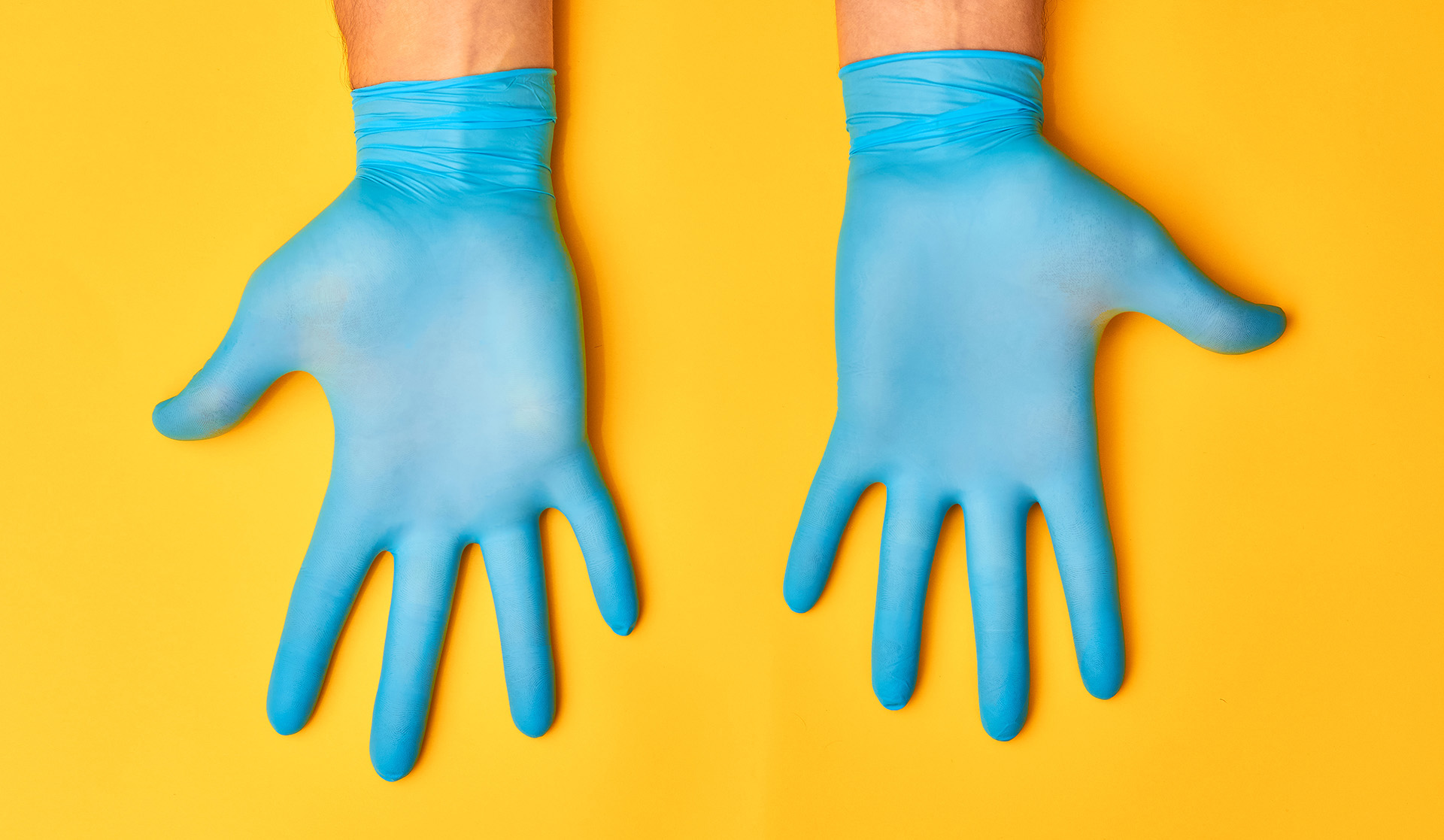A Guide to Choosing the Right Type of Disposable Gloves
Right now, we’re seeing a huge surge in the urgency to protect employees during COVID-19. Disposable gloves help to keep germs from touching the skin, effectively keeping you and your staff healthy and safe. But which type of disposable glove is the right fit for you and your business? Here we break down the different types of disposable gloves on the market to help you in choosing the right type of disposable gloves for your business.
During this time we are prioritizing product allocation on items such as gloves based on market demand and conditions and prioritizing healthcare and other essential businesses first.
Nitrile Gloves
As one of the most favored disposable glove types for the Healthcare industry, nitrile disposable gloves are made from synthetic materials and are often used for healthcare and janitorial purposes. They function as a high-quality replacement for Latex glove products and offer a higher puncture resistance, three to five times more than Latex. As a Latex-free product, Nitrile disposable gloves allow anyone to use them without having to worry about allergies. These gloves offer excellent resistance to chemicals that are commonly used in different types of workplaces and as they conform to the wearer’s hands better than similar products, they have become a favored product of customers who use disposable gloves regularly.
Nitrile disposable gloves come in both powder and powder-free options, as well as in many different sizes and thicknesses for whatever use you may need them for.
Latex Gloves
Latex disposable gloves are an industry-standard option for healthcare and janitorial purposes. Made from natural rubber that comes from the sap of the rubber tree, Latex as a material provides a great barrier against chemicals and contaminants and offers an excellent fit to the human hand. The biggest obstacle when looking at latex gloves is a common allergy to Latex, so be sure to consider that before ordering for your uses.
Oregon is among three states (as well as Arizona and Rhode Island) that have active restrictions against using Latex gloves in foodservice establishments, so be aware of the regulations before ordering.
Vinyl Gloves
Best used for healthcare services and food preparation, vinyl disposable gloves are best used for short uses or for times when you’ll be putting gloves on and taking them off in short durations. Vinyl can be a more cost-effective alternative to Latex and still offers a great barrier against contaminants and chemicals. As opposed to Latex, which can be an allergy risk, Vinyl gloves are made from PVC resins and are a great option for foodservice companies.
You can also get vinyl gloves that are lightly powdered with cornstarch to make them a little easier to put on for you and your employees. Antimicrobial Vinyl gloves are also available that help to prevent the spread of germs on the gloves themselves.
Poly Gloves
The most economical options in terms of disposable gloves, poly gloves are excellent for food preparation or uses where workers will be changing their gloves often. They serve as an inexpensive solution for workers to keep their bare hands separate from food and can be a great option for foodservice industries combined with handwashing guidelines. Poly gloves are offered in a couple of different fit options, so be sure to check and see which works best for you and your employees before ordering. They are also powder and Latex-free which helps with customers or workers that might have a latex allergy.
Disposable Glove Use Guidelines from the CDC
- Wear gloves, according to Standard Precautions, when it can be reasonably anticipated that contact with blood or other potentially infectious materials, mucous membranes, non-intact skin, potentially contaminated skin or contaminated equipment could occur.
- Gloves are not a substitute for hand hygiene.
- If your task requires gloves, perform hand hygiene prior to donning gloves, before touching the patient or the patient environment.
- Perform hand hygiene immediately after removing gloves.
- Change gloves and perform hand hygiene during patient care, if:
- gloves become damaged,
- gloves become visibly soiled with blood or body fluids following a task,
- moving from work on a soiled body site to a clean body site on the same patient or if another clinical indication for hand hygiene occurs.
- Never wear the same pair of gloves in the care of more than one patient.
- Carefully remove gloves to prevent hand contamination.
Disclaimer
Please know that we are here to help you find the right disposable glove option for you and your business however due to COVID-19, we are prioritizing orders and demand for customers based on market and community needs.
For healthcare uses, please be aware that disposable gloves must be powder-free, sterile, textured and coated for true protection.
Sources:
https://blog.ammex.com/?s=know+your+glove+mat#.Xnt0Yi-ZPfZ
https://www.cdc.gov/handhygiene/providers/index.html
https://en.wikipedia.org/wiki/Medical_glove


